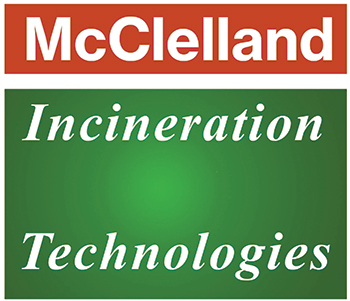 Introduction
Introduction
In today’s industrial landscape, especially in the petrochemical sector, the efficient management of waste and emissions is of paramount importance.
Among the critical tools enabling this balance is the MEG Plant Incinerator — a vital component in the sustainability strategy of modern petrochemical facilities.
In this article, we explore the significance of MEG Plant Incinerators, their operational dynamics, and their contribution to environmental stewardship.
For more insights on industrial incineration solutions, visit www.mcclellandindia.com — a trusted industrial incinerator supplier in India, based in Mumbai, with projects across Gujarat, Maharashtra, and nationwide.
The Role of MEG Plant Incinerators in Petrochemical Facilities
MEG (Monoethylene Glycol) plants are central to the production of chemicals used in:
✅ Polyester fibers
✅ Polyester resins
✅ Various industrial applications
However, MEG production generates complex waste streams — requiring careful management to minimize environmental impact.
This is where MEG Plant Incinerators play a crucial role, offering advanced waste management solutions aligned with stringent environmental regulations.
Operational Dynamics of MEG Plant Incinerators
1️⃣ Waste Management
MEG Plant Incinerators are engineered to handle a wide range of waste streams, including:
✅ Hazardous materials
✅ Non-hazardous by-products
By applying controlled high-temperature combustion, the incinerator:
✅ Reduces waste volume significantly
✅ Converts waste into inert residues
✅ Minimizes the need for landfill disposal
2️⃣ Energy Efficiency and Recovery
Beyond waste reduction, MEG Plant Incinerators contribute to overall plant energy efficiency.
Key benefits:
✅ Heat recovery → generates steam or electricity
✅ Recovered energy is used within the plant → reducing operational costs
✅ Enhances sustainability by decreasing reliance on external energy sources
3️⃣ Advanced Emission Control Technologies
Petrochemical incinerators are subject to strict emission standards — and modern systems incorporate advanced emission control technologies, including:
✅ Scrubbers
✅ Baghouse filters
✅ Catalytic converters
These technologies ensure effective removal of:
✅ Particulate matter
✅ Sulfur oxides (SOx)
✅ Nitrogen oxides (NOx)
✅ Volatile organic compounds (VOCs)
Result: Minimized air pollution and protection of local air quality.
Environmental and Regulatory Considerations
While MEG Plant Incinerators offer substantial benefits, they also operate within a highly regulated environment.
Key considerations:
✅ Continuous emissions monitoring
✅ Regulatory compliance with CPCB and SPCB standards
✅ Transparent engagement with stakeholders and local communities
✅ Sustainability reporting aligned with corporate ESG goals
Looking Ahead: Sustainable Practices in Petrochemical Industries
As global industries pursue sustainable development goals (SDGs), the role of technologies like MEG Plant Incinerators is becoming even more pivotal.
Future trends:
✅ Integration of circular economy principles
✅ Adoption of next-gen emission control systems
✅ Enhanced energy optimization across plant operations
✅ Increased automation and remote monitoring for better efficiency
Conclusion
The MEG Plant Incinerator represents a critical innovation in petrochemical waste management — balancing industrial productivity with environmental stewardship.
By:
✅ Effectively managing complex waste streams
✅ Optimizing energy use
✅ Implementing stringent emission controls
→ these systems contribute to a cleaner, more sustainable industrial landscape.
Whether you are involved in the petrochemical industry, environmental advocacy, or simply interested in industrial sustainability trends, MEG Plant Incinerators demonstrate how modern industries can align technological progress with ecological responsibility.
To explore customized incinerator solutions for petrochemical and industrial applications, connect with Mc Clelland Engineers Pvt. Ltd. — India’s trusted partner in advanced industrial incinerator technology.

